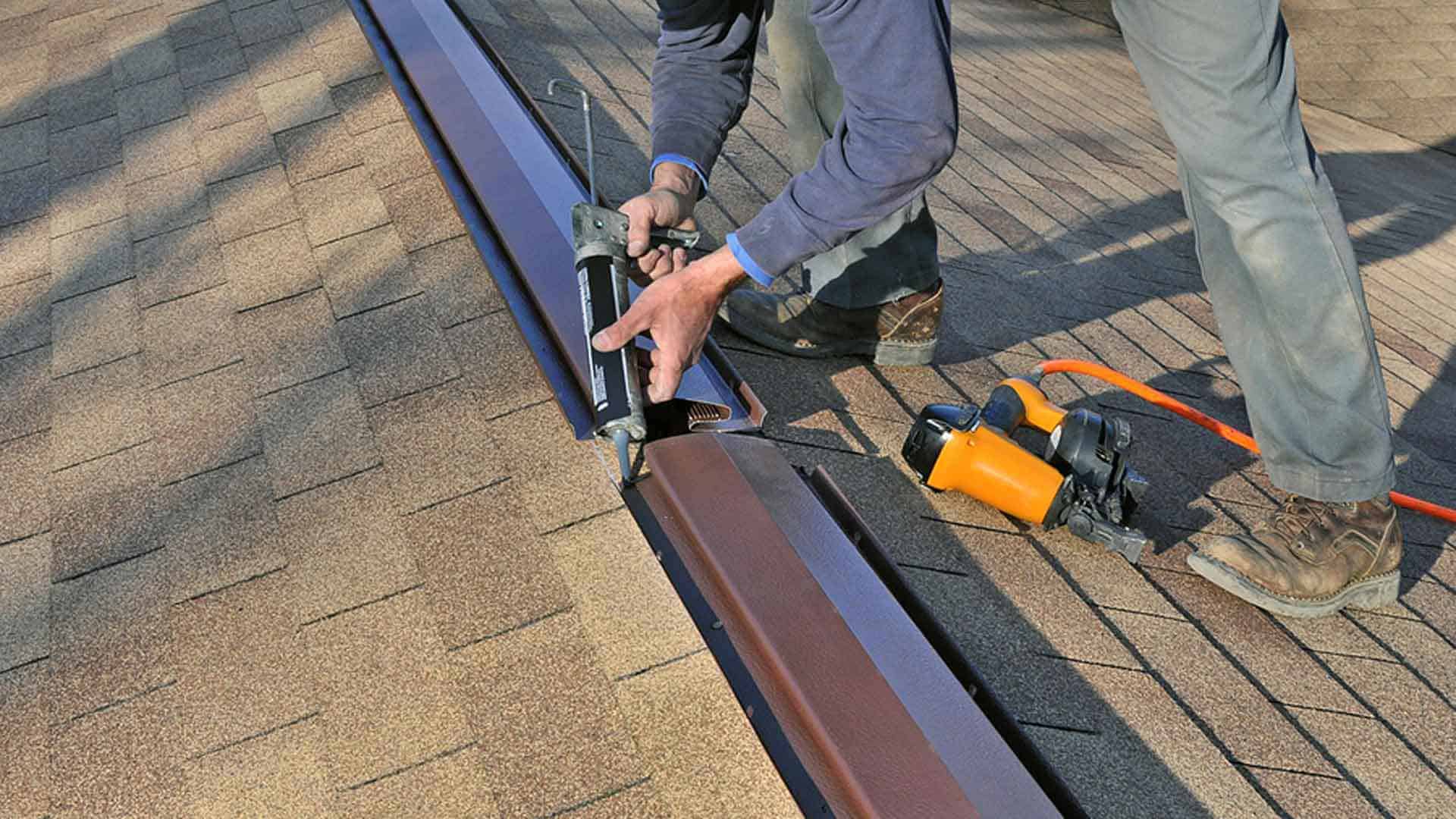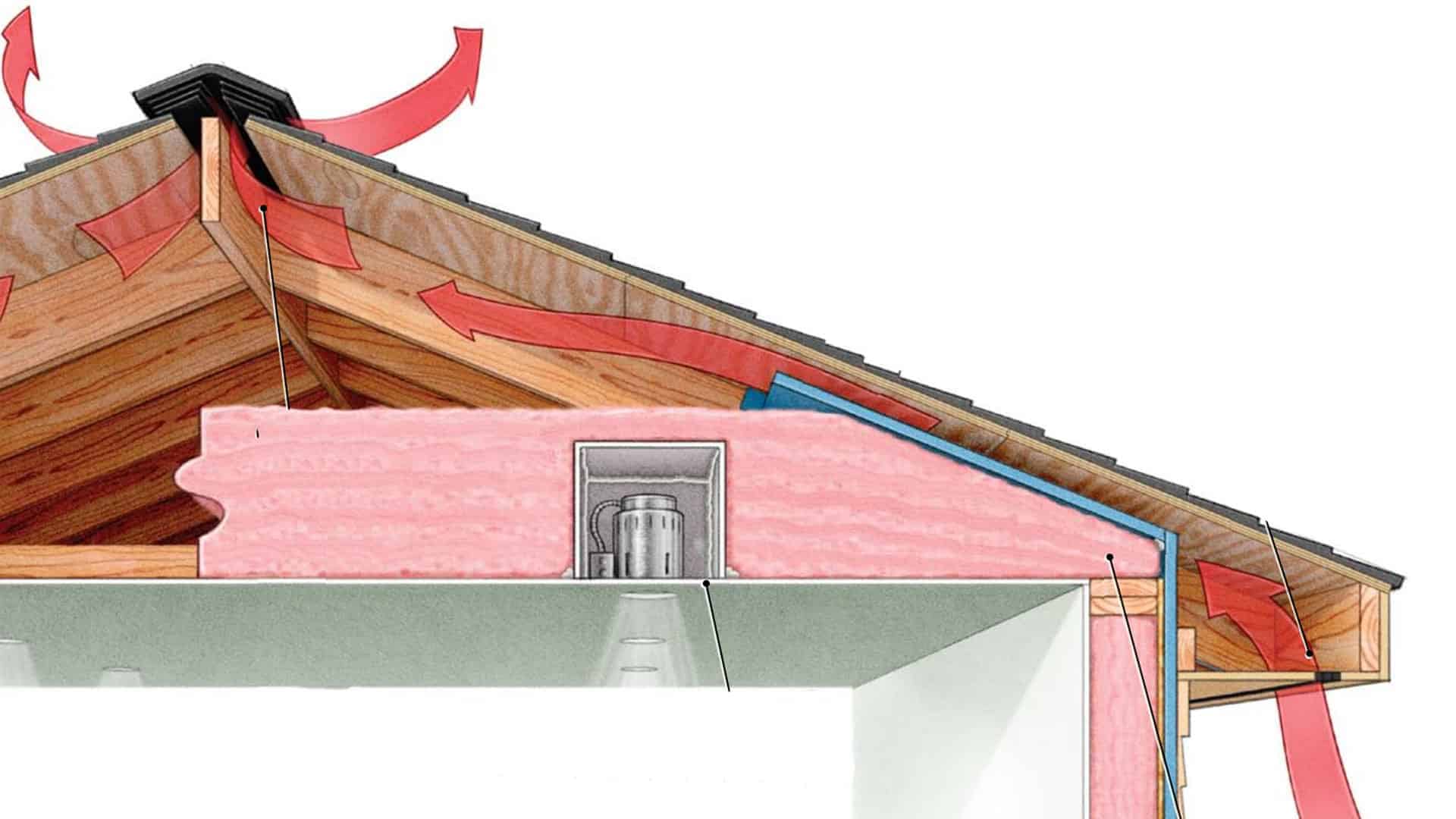
You want your home to be well-insulated to reduce the cost of heating and air conditioning. Equally important is the need for proper ventilation to ensure that moisture and heat can escape from your attic to avoid problems with mold and/or ice dams. Ridge vents (also called roof vent systems), working in combination with soffit vents, are the key home features that provide your attic with the ventilation you need.
Running along the top of the roof (see photo on top), a ridge vent is designed to blend with the roof line to maintain the attractive look of your home. The top of the roof is opened up to allow hot, moist attic air to escape. The opening is covered by roofing shingles that match the rest of the roof.
An efficient roof vent system should include an external baffle and an internal weather filter. Working together, they help draw the air out of your attic and keep weather from entering your attic. When combined with the soffit vents under the eaves (where the red arrow, lower right in the illustration below), you have an efficient air-handling system.

Ridge Vents Plus Soffits Equal Good Attic Ventilation
In order for ridge vents (and other types of attic vents) to provide adequate ventilation, you also need to avoid blocking air flow inside the attic. There are two main problems that cause air flow to be blocked.
- Homeowners store belongings in their attic which prevent air flow. This is especially critical with old fashion gable vents requiring air to flow from one end of the attic to the other end. Piles of boxes that create a wall will blocked air flow.
- Attic insulation is another problem in attics, when it blocks the soffits preventing air from entering the attic. Baffles (also called proper vents) installed in the rafters (shown in blue above) help insure that air flow isn't blocked.
This is why it's important to do your homework first. There are different problems so you need to find the right solution to any heating, cooling or energy efficiency issues you're having with your home.

Ridge Vents are Evolving
With my handyman business in New Hampshire, we had lots of older houses with gable vents (shown above) on the “gable” ends of a house. Ridge vents are relatively new (learn more about the history of attic ventilation). And then I moved to Florida where “off ridge” vents are being used instead of ridge vents … photo coming soon.
Here are some great articles and videos if you want to learn more:
- A soffit vents from FineHomeBuilding.com.
- Installing a Ridge Vent although it's not a do-it-yourself project.



